#cathy hirano
Text
The Life-Changing Manga of Tidying Up: A Magical Story by Marie Kondō. Illustrated by Yuko Uramoto. Translated by Cathy Hirano

Read time: <1 Day
Rating: 4/5
The quote: The true purpose of your home and your things is to bring you happiness. So, naturally, the criterion for choosing should be whether keeping something will make you happy—whether it will bring you joy. — Marie Kondo
Yuko Uramoto illustrations are really cute they complement the plot that Marie Kondo has in this manga. It is a fairly relatable story too as in Chiaki is relatable. Chiaki is a 29-year-old professional struggling to juggle a love life, professional life and housework. She falls in love easily and collects and drops hobbies like crazy. There are only three characters Chiaki, Marie Kondo and Chiaki's neighbour (and latest crush). While the plot is mostly a way to present the 10 tips there is something of a story there enough to call it a story. I do want to say I am wondering how widely reaching Marie Kondo's advice is. I'm wondering if some of the aspects of her ideas are geocentric. Or at least a little culturally specific. This is hardcore minimalism. I wonder if it feels more like it suits Asian cultures (my apologies if that comes across as racist it isn't supposed to). I'm guessing most people know that already because her whole does this spark joy thing went viral. I'm not a huge fan of them on the whole but I am glad I read this just so now I know more about what they are. If you do want to know what Marie Kondo's tips are this is a good way to read them.
#the life changing manga of tidying up#marie kondo#yuko uramoto#cathy hirano#manga#graphic novel#ktreviews#book review#read 2021#the life changing magic of tidying up#booklr
1 note
·
View note
Text
Books Read 2023
Good Talk: A Memoir in Conversations / Mira Jacob
A Grief Observed / C. S. Lewis
Grit Lit: A Rough South Reader / ed. Brian Carpenter & Tom Franklin
Two or Three Things I Know for Sure / Dorothy Allison
Weather: Air Masses, Clouds, Rainfall, Storms, Weather Maps, Climate (A Golden Nature Guide) / Paul E. Lehr, R. Will Burnett, Herbert S. Zim ; Harry McNaught (ill.)
Improbable Memories / Sarah Moon
Endless Endless: A Lo-Fi History of the Elephant 6 Mystery / Adam Clair
The Difference Between / Billy McCall
The Submissive (The Submissive #1) / Tara Sue Me
Last Night at the Casino [v. 1] / Billy McCall
The Life-Changing Magic of Tidying Up: The Japanese Art of Decluttering and Organizing / Marie Kondo ; Cathy Hirano (tr.)
Pnin / Vladimir Nabokov
My Heart Is a Chainsaw / Stephen Graham Jones
"Waltz of the Body Snatchers" / Alfred Bester, in Andromeda I: An original SF anthology / ed. Peter Weston
Blue Highways: A Journey Into America / William Least Heat-Moon
The Stars My Destination (The Gregg Press Science Fiction Series) / Alfred Bester
Laughter in the Dark / Vladimir Nabokov
Man and His Symbols / Carl G. Jung
Mysteries of the Unexplained / ed. Carroll C. Calkins
The Westing Game / Ellen Raskin
The Seven Ages / Louise Glück
The Wild Iris / Louise Glück
Vita Nova / Louise Glück
Doctor Who: Impossible Worlds: A 50-Year Treasury of Art and Design / Stephen Nicholas & Mike Tucker
Where's Waldo? (Where's Waldo #1) / Martin Handford
Where's Waldo? The Fantastic Journey (Where's Waldo #3) / Martin Handford
Doctor Who 50 Years #3: The Doctors / ed. Marcus Hearn
Rabbit, Run / John Updike
Mother Night / Kurt Vonnegut
Descriptive Cataloging of Rare Materials (Books) / Bibliographic Standards Committee, Rare Books and Manuscripts Section, Association of College and Research Libraries, in collaboration with The Policy Standards Office of the Library of Congress
"Descriptive Bibliography" / Terry Belanger, in Book Collecting: A Modern Guide / ed. Jean Peters
The Essential Doctor Who #2: The TARDIS / ed. Marcus Hearn
Speak, Memory: An Autobiography Revisited / Vladimir Nabokov
Chicago: City on the Make / Nelson Algren
Gustav Klimt, 1862-1918 / Gilles Néret
American Gods: A Novel / Neil Gaiman
Marcel Duchamp, 1887-1968: Art as Anti-Art / Janis Mink
The Empathy Exams: Essays / Leslie Jamison
Let Us Now Praise Famous Men: Three Tenant Families / James Agee & Walker Evans
Hallucination Orbit: Psychology in Science Fiction / ed. Isaac Asimov, Charles G. Waugh, Martin H. Greenberg
Dream Street: W. Eugene Smith's Pittsburgh Project / W. Eugene Smith ; ed. Sam Stephenson
Twilight / Gregory Crewdson ; Rick Moody
Magic Eye: A New Way of Looking at the World / N.E. Thing Enterprises
Bowie: Stardust, Rayguns & Moonage Daydreams / Steve Horton & Michael Allred ; Laura Allred (ill.)
After the Ecstasy, the Laundry: How the Heart Grows Wise on the Spiritual Path / Jack Kornfield
The Gin Closet: A Novel / Leslie Jamison
The New Kid on the Block / Jack Prelutsky ; James Stevenson (ill.)
A Book of Common Prayer / Joan Didion
Mariette in Ecstasy / Ron Hansen
Camp Damascus / Chuck Tingle
The Mass Production of Memory: Travel and Personal Archiving in the Age of the Kodak (Public History in Historical Perspective) / Tammy S. Gordon
Unfathomable City: A New Orleans Atlas / Rebecca Solnit & Rebecca Snedeker
Other Voices, Other Rooms / Truman Capote
Fabulous New Orleans / Lyle Saxon ; E.H. Suydam (ill.)
Weird Pennsylvania: Your Travel Guide to Pennsylvania's Local Legends and Best Kept Secrets / Matt Lake
Griffin & Sabine: An Extraordinary Correspondence (Griffin & Sabine #1) / Nick Bantock
Sabine's Notebook: In Which The Extraordinary Correspondence of Griffin & Sabine Continues (Griffin & Sabine #2) / Nick Bantock
The Golden Mean: In Which The Extraordinary Correspondence of Griffin & Sabine Concludes (Griffin & Sabine #3) / Nick Bantock
Breath, Eyes, Memory / Edwidge Danticat
Last Night at the Casino, v. 2 / Billy McCall
What If? Serious Scientific Answers to Absurd Hypothetical Questions / Randall Munroe
Collection-Level Cataloging: Bound-with Books (Third Millennium Cataloging) / Jain Fletcher
Speaking Pittsburghese: The Story of a Dialect (Oxford Studies in Sociolinguistics) / Barbara Johnstone
My Misspent Youth: Essays / Meghan Daum
Slender Intuition: Essays on Artist's Block / Brian Hitselberger
The Mister / E L James
Crapalachia: A Biography of a Place / Scott McClanahan
The Transcriptionist: A Novel / Amy Rowland
Explanations/Opinions below the cut:
Ok so I have several reading lists/stacks that I rotate through: my to-read spreadsheet (which has almost 300 titles listed in chronological order by date added, with the oldest being from 8/22/2014), my to-read bookcase/nightstand (which holds ~50 books I’ve acquired over the past few years but haven’t yet read), a stack of oversized unreads that don’t fit on the nightstand shelves (this gets its own list bc I need to read them and find a permanent home for them before the stack gets too tall), and “interruptions” (books that override the list order bc I didn’t want to wait to read them, for whatever reason).
Maybe it’s weird that I’m so attached to reading things “in order”? Idk. I’ve always been like this. It’s only a mild compulsion – obviously, I am perfectly capable of ignoring what’s supposed to be next on the list, in favor of reading something that catches my interest more strongly in the moment, but in general, I like to read things either in the order I added them to the list, or the order I personally acquired a physical copy (if I went by the list only, I’d be drowning in unread books [yay, college town thrift stores], so I gotta stay on top of that pile pretty regularly). So that is why I am often reading things that I first became aware of/added to my list nearly 10 years ago. Sometimes this practice results in feelings like, “Dang, I wish I would’ve actually read this 10 years ago,” but also sometimes, “WOW, I’m so glad I’m reading this RIGHT NOW, as opposed to 10 years ago when I first heard about it!”
I think my favorites this year were Mariette in Ecstasy; Other Voices, Other Rooms; Crapalachia; and Speak, Memory.
Mild disappointments were the essay collections by Leslie Jamison and Meghan Daum, two authors I’m pretty sure I discovered via popular and relateable quotes reblogged on tumblr ca. 2014, but the collections taken as a whole just had too many moments of cringe – casual classism, arrogant self-absorption, and other annoying and unrelateable qualities typical of privileged 20-something writers (this tone definitely appealed to me when I was a naïve and melodramatic snotty 20-something, so there’s that).
As a kind of memorial, Rachael and I read David’s three favorite books: The Stars My Destination, Mother Night, and American Gods. In all the time I knew him, including all the times we used to sit on the porch together, reading quietly while he drank whiskey, I never thought to ask him his favorites. I kept looking for pieces of him in the stories, wondering what lines stood out, what made a book memorable, what did it say about him that these were his favorites.
Being an elder Millennial, I’m in the stage of nostalgically re-acquiring important artifacts from my childhood, so that’s why there are some children’s books on my list. Where’s Waldo? was one of the most coveted books in my grade-school library! There was always a list of people waiting to check it out, but usually, whoever actually had the book that week would let the other kids gather around and look together.
My Heart Is a Chainsaw was a recommendation from my goth teenaged birthdaughter <3 which I probably read too much personal symbolism into but maybe not!
I thought John Updike was overrated, lol.
Favorite photography book: W. Eugene Smith’s Dream Street. His pictures made me so homesick, and it was wild because he took them from 1955-1957 but they still really, REALLY, to me, looked like the Pittsburgh of my ‘80s/’90s memories (bc Pittsburgh doesn’t change, and also the “idea” or “brand” of Pittsburgh in the ‘80s/’90s was ofc consciously referencing its industrial working-class past). He took over 10,000 photos but was never able to “finish” the project to his intense, obsessive standards of perfection (I KNOW THAT FEEL) and felt it failed to capture the multifaceted essence of the city. WELL, not in my opinion at least!
PS I'm moonmoth on LibraryThing.
6 notes
·
View notes
Text
Survivors (The Deer King, volume 1) by Nahoko Uehashi (Translated by Cathy Hirano)
An escaped prisoner may hold in his blood the cure for a mysterious and deadly plague.
2 notes
·
View notes
Text
"I guess you wouldn't make a good warrior after all. Anger. You think that's the reason I can't leave bloodshed behind?" She sighed deeply. "I wish it was that simple. Tanda, the problem is that fighting is in my very bones. I don't have any fancy, noble reason like anger at my fate. I'm just like a gamecock that launches itself into battle after meaningless battle. I like fighting. That's why I can't stop."
Nahoko Uehashi, Moribito: Guardian of the Spirit, trans. by Cathy Hirano, paperback ed. (Scholastic Inc., 2008), 174
#Nahoko Uehashi#Moribito#Balsa Yonsa#Tanda#Japanese literature#fantasy literature#children's literature
4 notes
·
View notes
Text
The Lost Wardens music
I do not write songfics, nor do I purposely assemble "soundtracks" for my fics. But when I write, there is this weird whirlpool of serendipity, coincidence, and/or magic involving the music I listen to. Sometimes there are themes I'm working on in the story that pop up in a new song that gets released that week. Sometimes I hear a song, and I think, What this song is making me feel about love/loss/potential/my characters making out/etc. is what I want to feel in the story. This is the collection of what that whirlpool has pulled in.
Joanna Newsom doesn't like Spotify, so the vocal tracks are in a YouTube playlist. The mostly instrumental albums are linked separately. Delete Tumblr's pesky href-dot-li from the URLs as necessary. After the jump: personal/author-y playlist notes for myself; not required reading.
🌊 The Osprey (main playlist; 17 songs)
🌊 Instrumental/atmospheric albums:
Windswept Adan - Ichiko Aoba
Invisible Island - Midori Hirano
Minor Planet - Midori Hirano
Broken Circle - scntfc
If The Lost Wardens had a score, it would sound like the above. Windswept Adan captures a lot of the joy that Alex finds in magic, while Midori Hirano's darker work makes me think of Jonathan and his secrets, or Alex waking up in the middle of the night after a troubling dream.
🌊 Fall of the High School Star Running Back - The Mountain Goats
This song appears twice on the playlist: first with the original, and towards the end with a cover by Loamlands. Alex does not share William's fate, thankfully, but I thought the fallen star athlete theme struck a chord given Alex's insecurity about his future.
🌊 Carry This Picture - Dashboard Confessional
Lovestruck youth, nautical motifs, mention of working-class dads.
🌊 Porcelain - Ichiko Aoba
Just a sample off Windswept Adan for the playlist. Video is full of ocean magic.
🌊 The World We Built - The Wild Reeds
At the end of Chapter 6, I mentioned that this song had sort of become the theme song of the fic, "from several characters' points of view, at different points in time." It's mostly the old wardens. Sometimes, the suitcase lines make me think of Jonathan. Sometimes, they make me think of Leslie, waiting.
🌊 Redwood Tree - Jamie Drake
Flower Dance vibes, lanky young Cathy in the woods vibes.
🌊 This Town - Trixie Mattel (feat. Shakey Graves)
I grew up in a town where half the kids in my school left for bigger cities and half ended up at Big-Company-without-whose-presence-the-town-economy-would-collapse. It's one of the reasons Stardew Valley's own themes speak to me in the first place, and it's definitely the reason this song ended up on this list after it was released.
🌊 Ozean - Annenmaykantereit
@flowerandthesongstress recommended me this song, and I loved it. After looking up a translation, I decided it was for Chapter 16 Jonathan. I tear up just listening to it sometimes.
🌊 I Think We're Alone Now - The Wild Reeds (Tiffany cover)
There's a parenthetical memory in Chapter 8 where Alex remembers jumping into the lake with Leslie while a party is going on at Sebastian's house. It's a scene that hasn't been written, only imagined; I imagine it's one of those early moments Alex realized he was falling for the new farmer.
But also, the themes of escape and secrecy ("Children, behave") fit with the feeling of relationship obstacles set by a previous generation.
🌊 Training Montage - The Mountain Goats
One of those neat coincidences: this song came out while I was working on the Zuzu City / training camp chapters, which were themselves meant to show time passing while Alex was away from Pelican Town.
🌊 Video Games - Trixie Mattel (Lana Del Rey cover)
Journey of the Prairie King vibes, lazy romantic vibes.
I also deleted a scene where Alex and Sebastian talked about video games (Sebastian building one, Alex having played very little). Might add it back if it ever fits.
🌊 Divers - Joanna Newsom
I'll hunt the pearl of death to the bottom of my life.
Very ocean, much deep. Men going off to / into the sea, women waiting on the shore.
You don't know my name, but I know yours.
🌊 Watermelon Sugar - Harry Styles
Look, just because I don't write smut doesn't mean my characters aren't horny.
🌊 Capelton Hill - Stars
If we treat this playlist as a soundtrack to the fic, then this song starts a sequence we'll call "too many options for end-credits songs". By itself, I thought Capelton Hill was a nice reflection on having a place where you can go back to the past, for a while.
🌊 Fall of the High School Star Running Back - Loamlands (Mountain Goats cover)
See above.
🌊 Good Intentions Paving Company - Joanna Newsom
A song about being on the road with someone you're afraid to admit you're falling in love with, and eventually going home.
🌊 Spectacular Views - Rilo Kiley
Screaming for happiness from some ocean cliffs.
🌊 Time, As a Symptom - Joanna Newsom
Joanna has a talent for songs that sound like incantations. I felt this one with the nature imagery and the themes of birth, death, and rebirth was a great way to close out this playlist for my little fic about magic.
11 notes
·
View notes
Note
Hi. I'd like to know if there's any websites with translated Moribito series, all ten novels.
Fan translations of the rest of the Moribito novel series can be found here and here! The first two novels, translated by Cathy Hirano (the person who translated Marie Kondo's book) can be purchased in Amazon, Kobo and other book websites!
32 notes
·
View notes
Text
Episode 4: (What's a Gyarados?) Show Notes:
You can listen to episode four on any major podcast provider HERE and on Apple Podcasts HERE.
This is a long one--we covered a lot of ground in episode four! And as Gabi mentioned at the beginning, we did a silly thing and recorded it in front of an open window. That resulted in about four brief moments where there's a weird, unpleasant reverb sound and we're awfully sorry about that. (We learned our lesson, though! It won't happen again.)
Books Discussed:
The Beast Player by Nahoko Uehashi, translated by Cathy Hirano
Anxious People by Fredrik Backman, translated by Neil Smith
Simon Snow trilogy by Rainbow Rowell (Carry On, Wayward Son, and Any Way the Wind Blows)
Arsène Lupin Gentleman Thief by Maurice LeBlanc, translated by Alexander Teixeira de Mattos
Whipping Girl by Julia Serano
Minor Feelings: An Asian American Reckoning by Cathy Park Hong
Empire of Wild by Cherie Dimaline
The 2021 Rhysling Anthology edited by Alessandro Manzetti
They Made My Face by Sara Backer (https://www.silverblade.net/2020/08/they-made-my-face/)
Sealskin Reclaimed by Alison Bainbridge (link unfortunately unavailable; it was probably originally published in a print journal)
Kings and Queens of Narnia by Meep Matsushima (https://microverses.net/archives/285)
The Ruthless Lady's Guide to Wizardry by C.M. Waggoner
Other Books Mentioned:
Cherie Priest (title unmentioned, but the book Smack referred to is called Grave Reservations)
Squad by Maggie Tokuda-Hall
The Wood Wife by Terri Windling
A Fire Upon the Deep by Vernor Vinge
Among Others by Jo Walton
Dog Songs by Mary Oliver
Upstream: Selected Essays by Mary Oliver
Strongmen: Mussolini to the Present by Ruth Ben-Ghiat
On Tyranny: Twenty Lessons from the Twentieth Century by Timothy D. Snyder
The Robber Girl by Franny Billingsley
Chime by Franny Billingsley
The Snow Queen by Hans Christian Andersen
Chime by Franny Billingsley
Agrippina: The Most Extraordinary Woman in the Roman World by Emma Southon
The Amazons: Lives and Legends of Warrior Women across the Ancient World by Adrienne Mayor (cover below, since we mentioned how pretty it was during the unboxing)
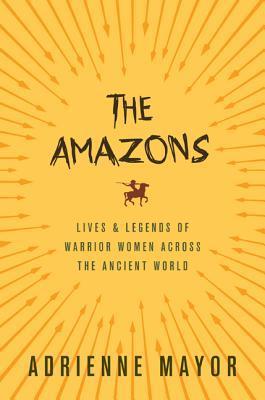
The Beast Warrior by Nahoko Uehashi translated by Cathy Hirano
Mongrels by Stephen Graham Jones
The Devourers by Indra Das
The Deficit Myth: Modern Monetary Theory and How to Build a Better Economy by Stephanie Kelton
Unnatural Magic by C.M. Waggoner
The Corpse Queen by Heather Herrman
Lumberjanes Vol 7: A Bird’s Eye View by Shannon Watters (Author), Kat Leyh (Author), Noelle Stevenson (Creator), Grace Ellis (Creator), Brooke Allen (Creator), Maarta Laiho Carey Pietsch (Illustrator), Ayme Sotuyo (Illustrator)
Snapdragon by Kat Leyh
Giant Days by John Allison and Lissa Treiman
And finally, this is a gyarados:

#podcast#gyarados#The Beast Player#Anxious People#Simon Snow#Carry On#Arsène Lupin#Gentleman thief#Whipping Girl#Minor Feelings#An Asian American Reckoning#Empire of Wild#Rhysling award#speculative poetry#2021 Rhysling Anthology#The Ruthless Lady's Guide to Wizardry#C.M. Waggoner#Nahoko Uehashi#Cathy Hirano#Rainbow Rowell#Cherie Dimaline#Fredrik Backman#Neil Smith#Maurice LeBlanc#Alexander Teixeira de Mattos#Julia Serrano#Cathy Park Hong#Alessandro Manzetti#book unboxing#books
6 notes
·
View notes
Text
The Life-Changing Magic of Tidying Up Review!

The Life-Changing Magic of Tidying Up: the Japanese art of decluttering and organizing
By Marie Kondo
Translated by Cathy Hirano
Ten Speed Press, 2014
The question of what you want to own is actually the question of how you want to live your life.
Here we go: let’s dive into the KonMari method and talk about the book that sparks joy! The tiny hardcover has no images, only text, and does stray from the “design” lean of the media I’ve reviewed thus far. However, it certainly is found in the Home section of many libraries, and ultimately does respond to one of my main queries with the DesignMod page, that is: how do we relate to the material objects around us, and how do they relate to us? The space of a home is certainly connected to your heart space and mental space.
Overall, this book gets 5 of 6 joyful geese. Without pictures, I got a little cerebral while reading, taking notes and asking questions like I do when I’m researching for a paper/article. This isn’t what threw me off, however. While Marie Kondo is ridiculously charming and her acknowledgement of the precious relationship between people and our things is truly key (*chef’s kiss), I can’t help but get frustrated at how she talks about throwing things ‘away’. More on this after the positives.

Many people around the world are familiar with the name Marie Kondo. The first things that come to mind are often a) neat folding techniques, and b) the question, “does it spark joy?”. There are many nuggets of wisdom across these pages. Here are some of my faves:
Do not even think about putting your things away until you have finished the process of discarding.
...we should be choosing what we want to keep, not what we want to get rid of.
...always think in terms of category, not place.
To quietly work away at disposing of your own excess is actually the best way of dealing with a family that doesn’t tidy.
The key is to store things standing up rather than laid flat.
The point in deciding specific places to keep things is to designate a spot for every thing.
Clutter is caused by a failure to return things to where they belong. Therefore, storage should reduce the effort needed to put things away, not the effort needed to get them out.
...arrange your storage so that you can tell at a glance where everything is…
As someone who grew up in the USA, I appreciate the KonMari method’s attention to reducing excess. Kondo also discusses the benefit of individually honing decision making skills as well as the ability to articulate your preferences. Her process asks that you hold each of your possessions one by one, an incredibly intimate opportunity to listen to why you are holding onto it. Being able to do this is definitely a skill; I’m sure you know someone who “loves” practically anything, or perhaps someone who is rarely satisfied. Asking if an item sparks joy is a good alternative to more proscriptive decluttering solutions, which necessitate that you keep a fixed number of items, or that you buy specific items. The KonMari method instead is very subjective, which I think is fab.
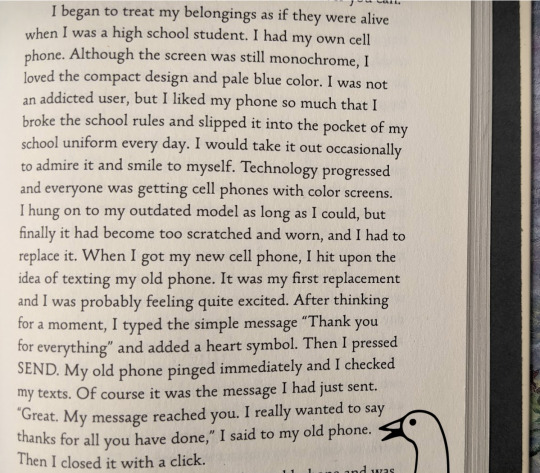
The book includes biographical anecdotes from Kondo in addition to a detailed explanation of the very specific process that is the KonMari method. She doesn’t shy from bragging about her business’s success, which leads me to my first critique. It must be understood that the KonMari method is heavily branded. She is a true phenomenon, starting from working with clients in Japan to a series on Netflix, a collection with The Container Store, and beyond. The website includes items like storage bins that one should purchase for a tidy home, even though her content suggests using old shoeboxes. This is something that she has worked very hard to develop. I think this book is a good resource for people wanting to learn about Kondo’s story as well as the particulars of her approach to tidying. However, I can’t help but notice capitalist vibes in how much is being sold.
My main critique lies in the discussion of waste, or lack thereof. It is positive that the method focuses on deciding what to keep in contrast to what to get rid of. The process is definitely more joyful that way. However, a huge part of the excess we possess is the excess we discard. We can consume so much because it’s so commonplace to throw things away, whether it’s because they are broken or because we now like something else. I’ve learned a lot about the institutionalized systems profiting off of waste production from the Slow Factory Foundation. Simply “recycling” or even “donating” items does not assume much responsibility, especially because many items designated for ‘charity’ end up in landfills, burned, or shipped to poorer countries to deal with.
Maybe you’ve heard the term fast fashion, which refers to business models in which inexpensive clothing is produced rapidly by mass-market retailers to keep up with trends. These systems exist in the Global North and usurp communities in the Global South by ways of landfills, under-paid labor, and general pollution. In many ways, the production behind any home item has become fast. Ask yourself, “how many items do I own that I can name the person who made it?” It’s a tough question for the average American. I’m Italian, and the situation there is similar, although home spaces in Italy are much much smaller.
I’m curious about the perspective on waste in Japan. Kondo developed her method when working with Japanese clients, primarily middle-aged, professional women. My point with this criticism is simply a worry regarding people living in the Global North who are less invested in minimizing waste, that they will take this book and discard things without acknowledging that there is no “away” when you throw something out. Kondo briefly touches upon how discerning what sparks joy should also be considered before buying anything after the big tidy. Nonetheless, I wish there were more consideration of class and economic status, that for many people with limited resources, they don’t have the luxury of getting rid of things they simply don’t like.
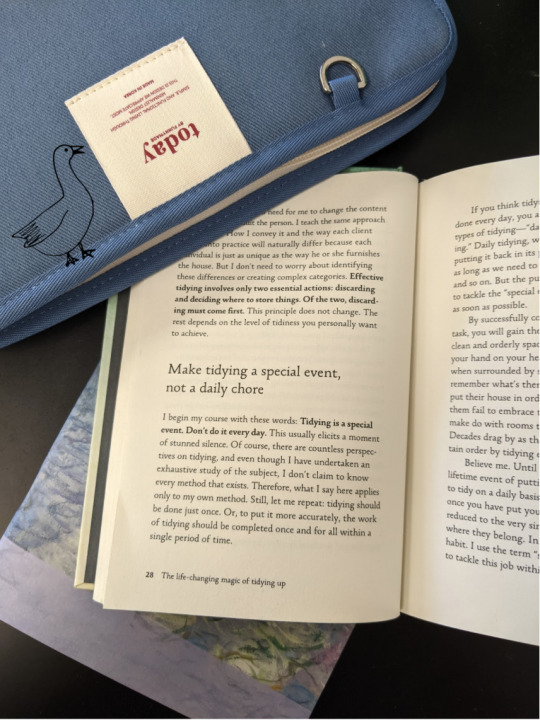
Once you learn to choose your belongings properly, you will be left only with the amount that fits perfectly in the space you currently own.
Overall, the book is very helpful and easy to read. Kondo’s approach is clear but also subjective, an excellent recipe for a deep transformation to restore balance and harmony in the home.
With loving curiosity,
DesignMod
#designmod#marie kondo#konmari#decluttering#organizing#tidying#waste#discarding#donating#japan#spark joy#the life-changing magic of tidying up#cathy hirano#does it spark joy#folding#slow factory#throwing away#storage#clutter#home and garden#interior design#consumption#capitalism#global north#global south#recycling#wht!#wehavethoughts!#reviewblr#book review
9 notes
·
View notes
Photo
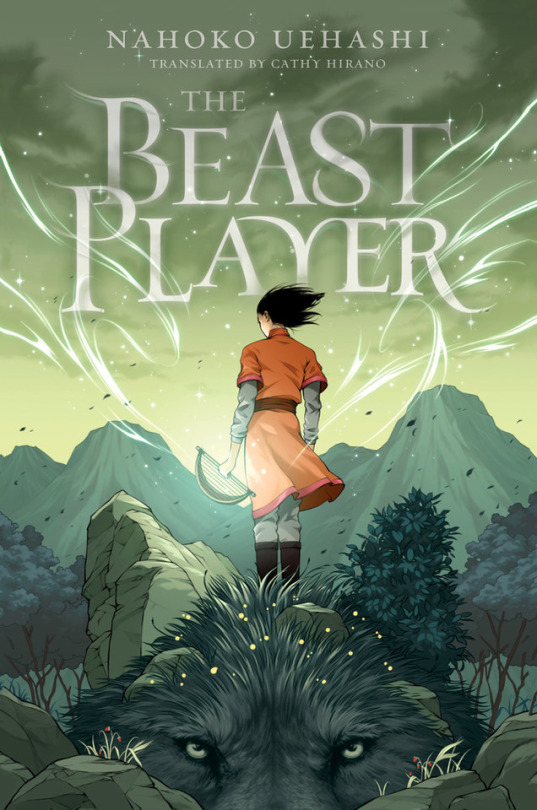
The Beast Player
by Nahoko Uehashi
Rating: B+
Elin’s family has an important responsibility: caring for the fearsome water serpents called Toda that make up the core of their kingdom’s army. So when some of the creatures mysteriously die, Elin’s mother is sentenced to death as punishment. With her last breath, using a power her people swore her to never use, Elin’s mother manages to send her daughter to safety. Now far from home, Elin discovers that she can communicate with both the Toda and the flying Royal Beasts. This skill gives her great power, but it also gets her involved in deadly political plots. Her greatest fear is that her gift will be used to make the Royal Beasts weapons. But what can one girl do against the leaders of her country?
--
Say what you want, but what initially drew me to this book was the cover because it reminded me of a Miyazaki movie. And then I assumed that the Toda or the Royal Beasts were dragons, and I am always a sucker for a good dragon story. Sadly, I came to realize that neither of them are dragons. But by then the story had charmed me enough that I wasn’t all that disappointed.
This story isn’t exactly what I expected, but I enjoyed the journey that it took me on. It has all these elements that have been worked together so well. There’s the beasts themselves, sci-fi elements, mythology elements, political intrigue, and a bit of mystery. For such a small book, you’d think that all these things wouldn’t be able to work together without things feeling weird or rushed, but they don’t. The different pieces fit together so well and kept me interested in Elin and her story the whole time.
I did find the world a bit confusing in the beginning. I didn’t understand the different people, and I though that the Yojeh’s land and the Aluhan’s were separate countries, and it was only much much later that things are finally explained better. There’s also a family tree at the start of the book, but I think a world map would have been more useful. The Yojeh’s ancestry isn’t all that important to the whole story, whereas having a map to see how the land looks would have helped me a lot more. But honestly, that was about the only thing I struggled with, and in the grand scheme it doesn’t matter all that much.
The ending is very, very open-ended, and it’s the one thing that ruined this for me. I want to know what happened. I don’t mind if some things are left unclear, but this doesn’t even give you that. It just ends right in the middle of the climax. Maybe one day this might have a sequel to clear things up, but I almost wish it doesn’t. I think this book works so well on its own. A sequel could ruin the magic that existed here. But the end, after this build up, doesn’t do it for me.
-Review by C.M.
6 notes
·
View notes
Text
Book Review: ‘The Beast Player’

The Beast Player by Nahoko Uehashi
My rating: 2 of 5 stars
Intelligently conceived but badly written, THE BEAST PLAYER builds for readers a vivid sequence of events whose fantastical drama and emotional acuity are frequently smothered by lopsided character development, predictable plotting, and inchoate narrative spacing. This is a coming-of-age tale whose charge is an orphan girl, abandoned, bullied, and forlorn. This is a tale of the many logical sinkholes native to power-sharing among racially divided political institutions. This is also a novel with a weak center of focus whose awkward dalliance with old-style literary chronicling techniques completely ruptures the storytelling experience.
Across the beautiful expanse of highlands, lowlands, hills, and mountainous terrains, of which the author provides no rational description of their geographical relationship to one another, so sits a bisected kingdom. To one side resides a pacifistic people, guided by their gentle leader (and purported descendant of the gods), while to the other side resides an expansive and mercantile people, guided by a militant king. History says the mercantilists enlisted to serve as shields of the pacifists, a willful dirtying of the body and soul, in exchange for entry into the realm of the gods to which the pacifists held prominence. Such was the case then, and so is the case now.
But the tide of history has eroded the best of intentions, and two unintended consequences have arisen. First and most obvious, not everyone wishes to share power. Second, those individuals typically strewn aside or forgotten in this bipolar effort, were forced to assimilate or chose the life of the nomad. Elin, the protagonist of THE BEAST PLAYER, descends from the latter of these unintended consequences. Indeed, the Ao-Loh, the oath protectors, are a people cursed with the role of taming or enslaving, and then ultimately guiding into battle, all manner of horrifying beasts and creatures. Creatures like the toda, legged-serpents bearing poisonous fangs, or the royal beasts, massive wolf-birds with incredible intelligence.
THE BEAST PLAYER hitches readers to the tale of Elin, whom from a very early age comes to know and experience the racism, bias, arrogance, and foolhardiness that frames her country and the role of her people in her country's stability. The girl's purported value as a descendent of the Ao-Loh ranges from the mythological and magic-wielding to the studious and enlightened. But as readers track the girl's traumatic youth on through her wayward education, Elin's growth as an individual can never quite outpace her inevitable collision with her country's duplicitous rulers' affection for power. Power over their subjects. Power over other kingdoms. Power over nature itself.
Readers find Elin to be an agreeable protagonist, if annoyingly so on occasion. The young woman's character development arrives in fits and starts, leaving readers in the rather awkward position of being increasingly successful at guessing what direction her whims will take the story. Furthermore, the senseless use of chapter titles that obliterate most of the story's surprises also plays a part. To a point, the novel treats Elin as a standout youth; but the truth is not that Elin is that much more brilliant than her counterparts, the truth is that everyone else completely lacks pragmatism.
Elin is not exceptionally naïve, she is merely inexperienced, having been exiled from her village and taken in by a retired beekeeper and academic. She is not particularly intelligent, she is merely capable of focus and strategic observation and thus willing to ask questions at the slightest turn of the unknown. For example, when Elin applies for schooling at an animal hospice funded by the capital, her teachers are shocked and dumbfounded to hear the girl question why they aren't applying a cross-disciplinary approach to veterinary medicine. That is, applying what they learn about caring for one species to others, or documenting the differences in behavior between the same species in the wild versus in captivity.
This is a problem for the novel because it places the main character, in her formative years, on a pedestal where she ultimately doesn't belong. Elin has no academic rivals. Elin has no confrontation with her instructors or other authority figures. How is a character supposed to grow when the only boundaries for her are the mistakes of common ignorance? The only character development that remains is left scattered and stranded to convenient backstories and delightful but ineffectual descriptions of achy, weathered faces set against old, weathered buildings.
On this point, THE BEAST PLAYER notably suffers from predominantly narrow and dimly perfunctory character dynamics. With very rare exception, most of the characters in this novel only appear to supplement a change already occurring in Elin's life as a child, student, and teacher and trainer of royal beasts. The unfortunate reality for this novel is that very few characters or character interactions matter, unless (or until) they involve Elin. This leads to critical secondary characters inhabiting a liminal realm of mild importance and impending obsolescence, because absent their interaction with the protagonist, they're functionally useless to the narrative.
As such, Joeun, a humble beekeeper who adopts Elin as a child, should have more value to the story than as a kind-hearted man who picked up a starving girl from the lakeshore and sent her on the path toward higher education on the hip of a favor from an old friend. As such, Tomura, a young instructor in Elin's first year, should have more value to the story than as a bitter but flexible man in search of success in all of the wrong places. The novel's parochial character dynamics fester openly and fester often, and the result is an excruciatingly shallow spectrum of character relationships on which the story is obliged to twist or turn.
In terms of narrative mechanics, the author's inconsistent and plainly impractical management of narrative spacing is impossible to ignore. That is to say, the novel's hazardous wavering between third-person background perspective and first-person emotional intuition pulls the reader out of the story time and again. It occurs far too often to be a mistake. Yet the author's manipulation of point of view is so brutally awkward and inchoate, one can't help but ponder the multitude of alternatives better suited to injecting concentrated personality or individuality into a deliberately fragmented narrative.
Readers encounter, for example: "Why was that such a terrible crime? Her mother had hesitated to use it even to save Elin's life . . . Anguish spread through her chest. In the end she chose to save me. Yet her hesitation, however slight, showed how great. . ." (page 75).
Or, perhaps: "Elin recalled the sting of the honeybee she had once tried to touch so long ago. Esalu is probably right. I chose to empathize with Leelan of my own free will. . ." (page 137).
Or: "He covered his face with his hands and, for a long time, simply listened to the sound of his own breathing. [..] When Seimiya returned to her room and was finally alone, she thought that now, finally, she could weep" (page 274).
The worst part about poor narrative spacing in THE BEAST PLAYER is that there's no pattern to its use. Sometimes, these flights of narrative breath are wholly rhetorical. Sometimes, they are meant to provide genuine insight into a character's emotional frame of mind. Sometimes, they are clumsily assumed to be interior monologues. Sometimes, they serve as highly distracting, backward-facing pivot points, intended to shift reader focus from one character to another, mid-paragraph or mid-speech. And sometimes, they are forced into play as transitional phrasing, politely but arrogantly shoving the reader from one scene to the next, but with zero context.
Further, THE BEAST PLAYER seems intent on mixing and matching the favorable (and thus presumed preferable) elements of contemporary coming-of-age fiction with the duly antiquated (and thus almost entirely unknown) facets that epitomize the chronological writings of ancient Chinese historiography. That is to say, the novel includes contemporary storytelling tropes, such as conveniently placed time skips, the convergence of ascendant youths, and the enduring conceit of pushing back against generational change. The novel also includes aspects of annalistic style narration, a technique that dates back centuries, which relies on a singular and vivid time sequence, unfailingly integrates family biographies and cultural backstories, and uses the sequence of history itself as a way to painstakingly and systematically orient readers to what is important, regardless of how necessary the information happens to be. The novel is written as a historical account, but is framed as a historical account in exclusive service to the failures or successes of only one character.
This is a long book, and it's irreverent approach to articulating a very simple tale will leave readers exhausted. One doubts future volumes will be worth the energy. In this novel, there are compelling characters with purposeful roles, but their narrow and parochial associations prove the value enumerated by their presence alone is close to nothing. In this novel, there are heartwarming entreaties to the vibrancy of youth and there are sly political perturbations set to tumble once-famed palaces, but these subplots stand weakly amid fragmented and unbalanced pacing. In this novel, there is a wealth of backstories, but many are irrelevant and waste readers' time; there are a number of secondary and tertiary characters, but they lack function. The book's extensive drive toward seizing Elin's youth as a window into the troubles of a faraway kingdom is unskilled and tiresome.
Book Reviews || ahb writes on Good Reads
#review#the beast player#fiction#nahoko uehashi#2 of 5 stars#godwin books#cathy hirano#squarefish#elin#ya fantasy#ya fiction#predictable plotting#flights of narrative breath#conveniently placed time skips#inchoate narrative spacing#annalistic style narration#places the main character on a pedestal#fantasy#willful dirtying of the body and soul#impending obsolescence of secondary characters#subplots stand weakly#will leave readers exhausted#emotional intuition pulls the reader out of the story
0 notes
Photo

The Beast Player, by Nahoko Uehashi To someone well-versed in American (and more generally, Western) narrative expectations, The Beast Player is a bit of an odd duck.
#animals#Cathy Hirano#fantasy#female protagonist#intrigue#Japanese#Nahoko Uehashi#The Beast Player#translation#YA
0 notes
Text
She had tried so hard to forget [her home of] Kanbal. Thinking about it hurt her like an old scar, tender to the touch. Physical wounds healed over time, but the more she tried to ignore the pain in her soul, the deeper it seemed to fester. There was only one way to deal with it: She must confront it head-on.
Nahoko Uehashi, Moribito II: Guardian of the Darkness, trans. by Cathy Hirano, hardcover ed. (New York: Arthur A. Levine Books, an imprint of Scholastic Inc., 2009), 3
#Nahoko Uehashi#Moribito#Balsa Yonsa#Japanese literature#fantasy literature#children's literature#quotes
1 note
·
View note
Photo



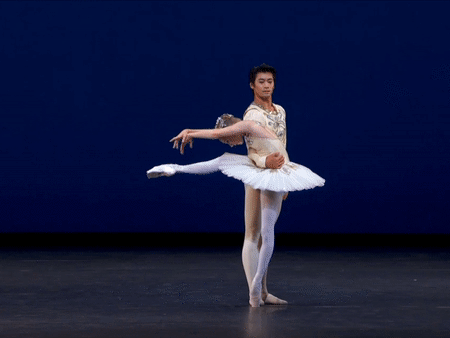
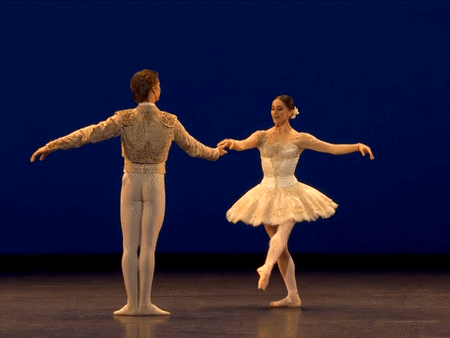

The Royal Ballet: Back On Stage
#anna rose o'sullivan#Marcelino Sambé#marcelino sambe#marcelino sambe and Anna rose O’Sullivan#la fille mal gardee#Frederick Ashton#Reece Clarke#Fumi Kaneko#fumi kaneko and reece clarke#in our wishes#cathy marston#Akane Takada#federico bonelli#akane takada and federico bonelli#swan lake#sarah lamb#Ryoichi Hirano#sarah lamb and ryoichi hirano#diamonds ballet#diamonds#jewels#jewels ballet#George Balanchine#Marianela Nunez#vadim muntagirov#marianela nunez and vadim muntagirov#laura morera#alexander campbell#laura morera and alexander campbell#the dream
115 notes
·
View notes
Note
Can you recommend some books that are Dark Academia that had the main characters as POC? I love your blog <3
Here’s a list, not all are Dark Academia-esque, some are only tangential, but they are still worth reading:
Midnight’s Children by Salman Rushdie
Real Life by Brandon Taylor
Girl With A Pearl Earring by Tracy Chavelier
A Little Life by Hanya Yanagihara
Tiny Pretty Things by Sona Charapoitra and Dhonielle Clayton
When The Ground Is Hard by Malla Nunn
Never Let Me Go by Kazuo Ishiguro
Six of Crows by Leigh Barrdugo
A Deadly Education by Naomi Novik
The Beast Player by Nahoko Uehaishi, translated by Cathy Hirano
Gumiho by Kat Cho
The Novice by Taran Matharu
The Chosen by Taran Matharu
An Ember In The Ashes by Sabaa Tahir
Miss Timmin’s School For Girls by Nayana Currimbhoy
A Great And Terrible Beauty by Libba Bray
Feel free to ask for more book recommendations in my asks!
#dark academia#books#light academia#books and libraries#bookworm#reading recommendations#poc#poc dark academia#black academia#desi#original post
293 notes
·
View notes
Photo
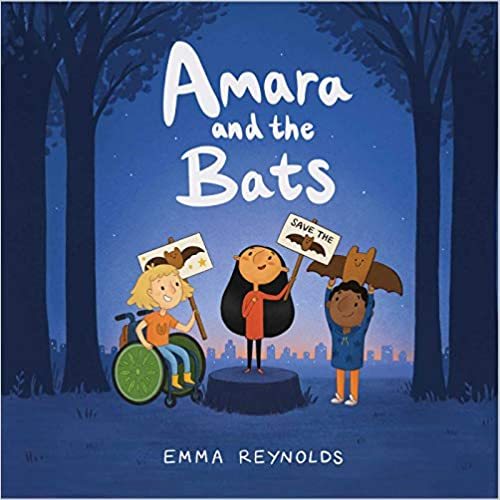
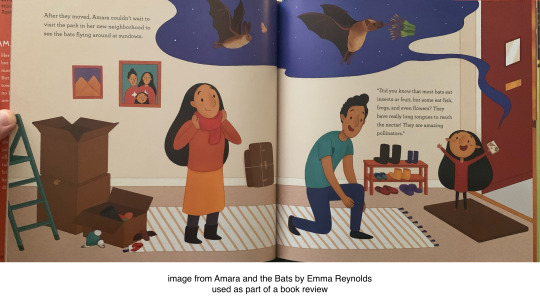
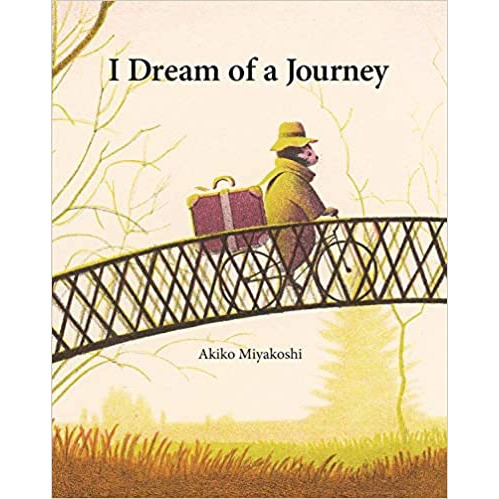


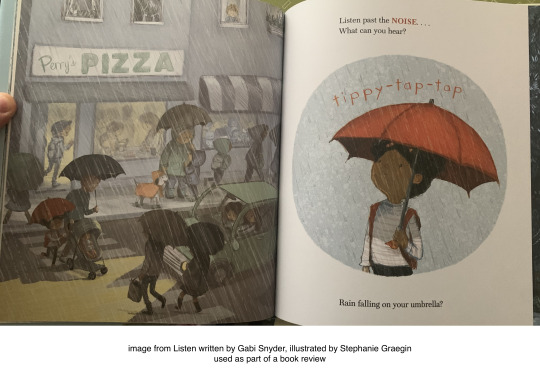
I Dream of a Journey by Akiko Miyakoshi. Translation by Cathy Hirano. Kids Can Press, 2020. 9781525304781. http://www.powells.com/book/-9781525304781?partnerid=34778&p_bt
A hotelkeeper has never been anywhere but his little town. At night he dreams of traveling to the faraway places his guests have told him of, and of visiting them.
Miyakoshi's drawings are amazing, particularly the contrast between the black and white drawings of the hotelkeeper's reality and the stunning colors in his dreams. Every page of this quiet book is a wow.
Listen written by Gabi Snyder, illustrated by Stephanie Graegin. Paula Wiseman, 2021. 9781534461895. http://www.powells.com/book/-9781534461895?partnerid=34778&p_bt
This book encourages kids to listen past the noise (particularly the overwhelming noise of a city) to hear individual sounds, to think about sound words, and to be kind. A quiet and lovely book, despite the cacophony it describes. My favorite two-page spread is about rain.
Amara and the Bats by Emma Reynolds. Atheneum Books for Young Readers, 2021. 9781534469013. http://www.powells.com/book/-9781534469013?partnerid=34778&p_bt
Amara loves bats! And she collects bat facts. But after her family moves, there aren't any bats in the nearby park. So she starts a Save the Bats campaign to make the park bat friendly again.
Worth nothing: there are bat faces on the front endpapers! Plus several pages of bat facts at the end.
27 notes
·
View notes
Text
So this year I, like a lot of people, was going through some stuff. And the way I coped, particularly over the summer, was by reading. I read between 275 and 300 books this year (final count pending), which is certainly the most I’ve done in at least a decade. And a lot of them were very good! I narrowed myself down to a list of forty recommendations, with short write-ups of ten, and made a point of not repeating authors. You can see everything else on my StoryGraph account though.
YA/MG:
The Beast Player - Nahoko Uehashi trans. Cathy Hirano
Death Sets Sail - Robin Stevens
Echo After Echo - A.R. Capetta
Half World - Hiromi Goto
A Phoenix First Must Burn: Sixteen Stories of Black Girl Magic, Resistance, and Hope - ed. Patrice Caldwell
Shadow of the Batgirl - Sarah Kuhn & Nicole Goux
A Song Below Water - Bethany C. Morrow
The Scapegracers - Hannah Abigail Clarke
YA contemporary fantasy is obviously a well-trodden genre, but this felt like a really fresh take. Sharp prose, interesting magic system, and a really fantastic and original-feeling POV character. I can’t wait for the sequel.
We Are Not Free - Traci Chee
This is a historical novel about residents of Japanese-American internment compounds during WWII, so it is not a light read. But it was powerfully emotionally affecting, and really compelling from a craft perspective as well; each chapter is narrated by a different character, and seeing how all the perspectives intersect is really remarkable.
ADULT FICTION (mostly spec):
A Choir of Lies - Alexandra Rowland
The City We Became - N.K. Jemisin
The Empress of Salt and Fortune - Nghi Vo
The Four Profound Weaves - R.B. Lemberg
Homesick: Stories - Nino Cipri
Master of Poisons - Andrea Hairston
Mexican Gothic - Silvia Moreno-Garcia
The Order of the Pure Moon Reflected in Water - Zen Cho
Phoenix Extravagant - Yoon Ha Lee
Piranesi - Susanna Clarke
The Seep - Chana Porter
Skin Deep Magic - Craig Laurance Gidney
Stormsong - C.L. Polk
Freshwater - Akwaeke Emezi
One hell of a debut novel. Emezi has said it’s largely autobiographical, which makes it one of two really unique takes on autobiography and memoir that I’ve read this year. It’s about trauma, immigration, queerness, disability...I really just recommend you read it, though perhaps after checking a summary, as it deals very frankly with some potentially triggering subjects.
Not So Stories - ed. David Thomas Moore
This year I spent a lot of time with short stories and novellas, which is a little unusual for me. Several collections made a strong impression (there’s a few others on this list), but I adore the conceit of this one, which features a group of authors of colour responding to Kipling’s intensely colonial “Just So Stories” by writing new fables of their own. Some directly riff on Kipling’s tales, others go in entirely new directions, but all are really effective.
The Raven and the Reindeer - T Kingfisher
Kingfisher is one of those authors I discovered this year who I am shocked I had never read earlier. She’s prolific, works in genres I like, and is beloved by several of my friends. Consider this book a stand-in for her catalogue in general on this list, although of all the books by her I read it’s the only direct fairy-tale retelling. Really great take on Andersen’s Snow Queen
The Unspoken Name - A.K. Larkwood
This was just a ton of fun. Very queer, frequently hilarious, in a totally bizarre fantasy world (worlds, even!) and with a great protagonist. Another really confident debut novel, and another one where I can’t wait to check out where the series goes from here.
NONFIC:
The Body Keeps the Score: Brain, Mind, and Body in the Healing of Trauma - Bessel van der Kolk
Disability Visibility: First-Person Stories From the 21st Century - ed. Alice Wong
Disfigured: On Fairy Tales, Disability, and Making Space - Amanda Leduc
Distorted Descent: White Claims to Indigenous Identity - Darryl Leroux
In the Dream House - Carmen Maria Machado
The other unique memoir I alluded to above, Machado non-linearly unpacks an abusive relationship she experienced with incredible clarity and artfulness. As someone who’s experienced abuse, parts were very familiar, and Machado’s writing is very effective at laying a situation bare (a skill she uses to great effect in her short fiction as well). This book also has some of the most memorable and narratively impactful citations I have ever seen. Read it to understand how that’s the case.
The North-West is our Mother - Jean Teillet
This is straight-up a history book but it’s a very clear and engaging one. For people who’ve ever wanted to know more about Métis people and our history, particularly in the 19th and early-20th century, this is going to be one of my go-to recs. It’s a little sparser with the more recent stuff, but there are other books to fill that gap.
ROMANCE:
Band Sinister - K.J. Charles
The Doctor’s Discretion - E.E. Ottoman
Invitation to the Dance - Tamara Allen
Two Rogues Make a Right - Cat Sebastian
Silver in the Wood - Emily Tesh
A Taste of Honey - Kai Ashante Wilson
Behind These Doors - Jude Lucens
This year is really the first I’ve read romance in any serious way, but I did read a lot of it and learned a fair amount about what I like. This ticks a lot of those boxes (historical [Edwardian, in this case]! Gay! Engages honestly with social issues of the period!) while also being a story about people negotiating polyamory, with much of the conflict being rooted in how one effectively communicates with the people they care about. Really different from anything else I read, and really well-done.
The Care and Feeding of Waspish Widows - Olivia Waite
This is probably my favourite romance novel of the year. It’s a slow-burn Regency story about the relationship between two middle-aged working women, a beekeeper and a bookseller. It’s also a story about prejudice, mob mentality, and the intense class divide in Regency England -- the Peterloo massacre is a significant element, and the way that opposition to it brought together a coalition of different social groups that ultimately could not hold due to other prejudices dividing them. It’s really nuanced, and really effective. Also, I am assured by a lesbian friend that the sex scenes are very hot.
SO ANYWAY. A lot of recommendations, and more detail about some of the ones I most encourage people to pick up. Really in my opinion you can’t go wrong with any of these, though, and I hope you take a look at some next time you’re searching for something to read!
What a year, huh?
31 notes
·
View notes